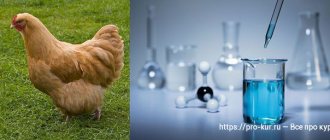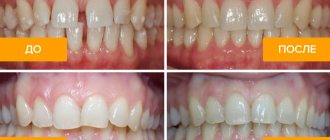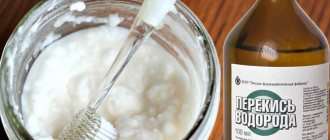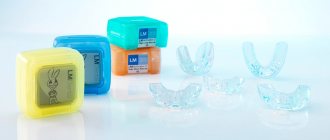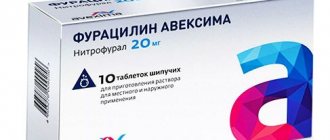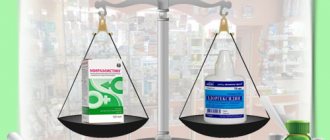Mechanism of action
Blue helps destroy pathogenic organisms and disinfects surfaces. When administered internally, it has a negative effect on pathogenic flora in the gastrointestinal tract and is widely used for poisoning. Another remedy relieves mild pain. It can be compared with brilliant green, but their mechanism of action is different. Blue iodine stimulates the thyroid gland, which performs the function of protection against harmful microorganisms. When chickens lack this substance, organ dysfunction occurs, which can lead to a decrease in immunity.
The product is poorly soluble in water and alcohol, after penetration into the bacterial body it causes cell dysfunction and the body dies. The medicine is quickly eliminated from the tissues of chickens, which practically eliminates the development of side effects.
How is methylene blue used for chickens?
Let us recall that the drug in question is a universal one and is part of a complex of drugs used in the fight against many diseases.
The drug is dosed taking into account the type of pathology.
For cuts and wounds, a 1-3 percent alcohol solution is effective, which is used to treat the damaged area on the skin using a cotton swab.
In case of burns, priority is given to a 1% water-based solution.
Inflammation. This is a companion of infectious diseases. When the inflammatory process affects the intestinal tract, the drug is dissolved in water: powder (0.5 g) + boiled water (2.5 l). The working solution is poured into the drinking bowls. Use until symptoms disappear.
Poisoning. A solution is prescribed that includes glucose (solvent) and methylene blue. Method of application: injections. Dosage – 0.2 ml per kilo of live weight. Severe poisoning requires a large dose - 0.5 ml per 1 kilo of weight.
Birds with bursitis are prescribed a 2% remedy. Dose – 0.01% per kilo.
Coccidiosis. For this disease, “blue” diluted with water is prescribed. The ratio of components is 50/50. Method of use: drinking from a drinking bowl. Usually a week is enough to get rid of the problem.
Pullorosis. And the drug is effective against this terrible disease. The latter is dosed taking into account the age group of the bird. For example, a single dose for young chickens given 3 times daily is 0.5 ml. Usually a 10-day course of treatment is sufficient.
Severe forms of diseases. A 3-fold daily dose of the drug is recommended for birds of all ages. A single dose for young animals is 0.5 ml, for birds over 12 months of age – 1 ml. The course lasts until the bird is cured.
Weakened immune system. In this case, 0.4 ml of methylene blue is used daily and once. Course duration is 14-15 days.
By the way, there is still no information confirming the harmful effects of the drug on quantitative and qualitative indicators of egg production.
How to use, optimal doses
Methylene blue is used externally and internally. Depending on the method of application, a specific dosage is established.
- Outdoor use. For external use, apply blue to pre-cleaned affected areas of the body of an animal or bird. During application, it is important to cover a small area of adjacent healthy tissue. Use a 1-3% alcohol solution of bluing and cotton pads. For urethral infections, take a 0.02% aqueous mixture to rinse the cavities. Methylene blue powder is diluted with water at a ratio of 1:5000. The throat is sanitized using the same method.
- Using blue iodine internally. When birds have coccidiosis, methylene blue is administered orally, diluted in water at a ratio of 1:1. The duration of therapy is 1 week. Young individuals up to 1 month old need 0.5 milliliters 3 times daily. Adult chickens are given 1 milliliter 3 times a day. When it comes to pullorosis, chickens are given half a milliliter of blue. The product is diluted with clean water and given 3 times a day. The duration of the treatment course lasts 10 days-++. In case of poisoning, chickens are injected into the axillary vein with a 1% solution based on a 15% glucose solution. Methylene blue is usually used as an adjunct to primary therapy. As a mono drug, the product is not suitable.
Blue is widely used as a prophylactic agent to increase the protective functions of the body of chickens. It is given 0.3-0.5 ml once a day .
How does methylene blue work?
After applying the product to the problem area (wound), an organic complex is formed, consisting of the active substance “blue” and the pathogen protein. This leads to the death of the culprits of the infection. This is how the disinfection process occurs.
In addition to the external use of blue iodine, methods for its internal use have been developed. In the second case, the drug is prescribed for the following problems:
- Poisoning. Under the influence of the active substance of the drug, unwanted guests caught in the intestinal tract die;
- minor pain;
- diseases of the thyroid gland, one of the tasks of which is to provide the body with protection from pathogenic microflora. Unpleasant prospects if there is a malfunction of this organ: a bird with a weakened immune system and NS disorders.
Positive effects of “blueing”:
- Disinfection;
- pain relief;
- neutralization of toxins that cause poisoning;
- stimulating thyroid function.
For therapeutic purposes, “blue” is used for burns, ulcers, and eczema. The drug also helps with the colonization of birds by parasites and infectious diseases caused by bacteria. Methylene blue normalizes the concentration and ratio of leukocytes, restores lost elasticity to blood vessels, and is positively associated with blood pressure and immune status. As you can see, “blue” is a universal remedy that helps with many health problems of chickens.
You can often hear that methylene blue works like brilliant green for chickens. This is a misconception, since these products differ in the degree of solubility in water and other solvents.
The obvious advantage of the drug in question is that it does not lead to side effects.
Important! Treatment with methylene blue alone is ineffective. The drug methylene blue is prescribed in conjunction with other veterinary drugs. We are talking about complex treatment.
What is blue iodine used for?
The scope of application of methylene blue is wide. Indications include:
- disinfection of premises;
- treatment of skin lesions;
- resistance to poisoning;
- treatment of fungal infections;
- elimination of skin parasitic microorganisms;
- relief of pain;
- increased exposure to antimalarials;
- for treating affected areas for genitourinary infections.
On affected tissues, the product creates a protective film.
Methods for preparing methylene blue
The product can be purchased at a pharmacy or prepared independently. To make it at home, use the recipes below. The first instructions were created by Dr. V. Mokhnach. The second method is less popular, but makes it possible to obtain iodine, which dissolves better and does not irritate the epithelium.
- Recipe 1. You will need 200 ml of water, 1 tbsp. starch, 1 tsp. citric acid, 5% iodine in the amount of 1 dessert spoon. Take 100 ml of warm liquid, add starch and sugar to it. The components are mixed until the mass becomes homogeneous, without lumps. Pour citric acid into it and pour in another 100 ml of water. The mixture is placed on the stove and brought to a boil. It should turn out to be jelly. It needs to be cooled, pharmaceutical iodine poured in, and stirred. The liquid should turn blue. It is poured into a bottle and capped tightly. When interacting with the medicine, observe safety precautions, since it is difficult to wash away. Homemade blue can be stored for 3-4 months. When the composition begins to lose its blue tint, it loses its healing qualities.
- Recipe 2. Take 250 ml of water, 1 tbsp. starch, 5% iodine in the amount of 1 tsp. Pour 50 ml of warm water, starch, pharmaceutical iodine into a small saucepan, stir. Add 200 ml of boiling water to the mixture in a small stream, without ceasing to stir. The result is a paste-like solution. Let cool, pour into a bottle, and seal. Store prepared blue for 3 weeks in the refrigerator.
If you do not follow the proportions, the effectiveness of the product decreases.
How to preserve methylene blue, expiration date
Blue bought at a pharmacy does not have a shelf life, provided that the storage conditions are met. Solutions with water or alcohol are suitable for 3 years from the date of issue. After opening, the period of suitability is shortened. The jars should be stored tightly closed, at low humidity and air temperature +15-25. If the blue spills on furniture or clothes, it cannot be washed off.
Methylene blue checker
Iodine checkers are widely used in the treatment and prevention of pathological conditions in birds. They are purchased at the pharmacy; they have high permeability. Checkers are used for the following purposes:
- disinfect the chicken coop;
- prevent outbreaks of epidemics;
- implement therapy during outbreaks of infections.
Indications for use
External use Methylene blue is effective for pyoderma, burns, folliculitis, and other skin diseases.
You can use the product for washing the affected cavities for urethritis and cystitis.
You can also take Methylene blue solution orally for urethritis, cystitis, and other inflammations of the urinary tract.
The drug is administered intravenously for poisoning.
Also, the instructions for Methylene Blue indicate that it can be used to diagnose renal function - due to the fact that after internal use of the drug, urine turns blue.
Domestic veterinary drugs METHYLENE BLUE. Methylenum coeruleum.
Properties. Dark green crystalline powder or dark green crystals with a bronze luster. Slightly soluble in water (1:30), slightly soluble in alcohol, insoluble in ether. Aqueous solutions are blue. Sterilize with running steam at a temperature of 100°C for 30 minutes.
Release form. Available in powder and in ampoules containing 20 and 50 ml of 1% solution of methylene blue in 25% glucose solution.
Store in well-sealed jars, in a place protected from light, and ampoules in standard packaging.
Action and application.
It has a weak but long-lasting antimicrobial effect, does not irritate mucous membranes and wounds, forms a protective film on the surface of wounds, and promotes the growth of granulation. After intravenous use, it forms methemoglobin in the blood, which is more similar to cyanides, and therefore is used for cyanide poisoning. Possessing a redox effect, methylene blue can play the role of an acceptor and donor of hydrogen in the body, which is of great importance in some poisonings.
After intravenous injection of small amounts of methylene blue into the blood, methemoglobin is reduced to hemoglobin, which is used in case of poisoning with methhemoglobin-forming poisons (nitrites, aniline, plant poisons). If no more than 70% of methemoglobin has formed in the blood, then methylene blue is a good antidote.
Externally used in the treatment of weeping and sluggishly granulating wounds, ulcers, first and second degree burns, eczema, and for pustular skin diseases in the form of a 1-3% alcohol solution or powder (1-2% concentration). To limit secretion in serous bursitis, a 2% solution of methylene blue is injected into the bursae after removing the exudate from them.
For infectious diseases of the urinary tract (cystitis, urethritis), wash them with a 0.02% aqueous solution. For infectious diseases of the gastrointestinal canal, methylene blue is used internally for animals; it is given to birds in a drink at a dilution of 1:5000.
An aqueous solution of methylene blue is used in small doses intravenously for poisoning with nitrites, aniline and its derivatives, plant poisons that form methemoglobin in the blood (at the rate of 0.1-0.25 ml of a 1% solution per 1 kg of animal weight), as well as for poisoning cyanides, carbon monoxide, hydrogen sulfide (0.5 ml of 1% solution per 1 kg of animal weight).
Doses orally
0.5-1% solution: horses and cattle 200-600 ml;
small cattle and pigs 50-160 ml; dogs 10-30 ml; intravenous
1% solution: horses and cattle 100-200 ml; small cattle and pigs 20-50 ml, dogs 10-30 ml.
Instructions for use
For external use, Methylene Blue is used in the form of an alcohol solution of 1-3%. Treat the affected (pre-cleaned) areas using a cotton swab. Apply the solution to both damaged and adjacent healthy tissue.
For rinsing with cystitis and urethritis, use an aqueous 0.02% solution (the powder is diluted in a ratio of 1:5000)
Adults take methylene blue orally, according to the instructions, 0.1 g three or four times a day.
Children also take the solution three or four times a day, but the required amount of the drug is calculated based on the child’s age: 0.005-0.01 g for one year.
Using methylene blue to treat chickens
The method of using the medicine depends on the clinical case. Most often, veterinarians recommend doing the following:
- damage to the skin - washing the wounds with an alcohol solution of 1% or 3%;
- infectious diseases of the digestive system - drink chicken with water in a ratio of 1 to 5000;
- chicken bursitis - injection of 2% into wounds, volume of the drug - per 1 kg of chicken weight 0.01%;
- intoxication with chemicals - intravenous administration of a 1% solution, dosage - per 1 kg of chicken weight from 0.1 to 0.25 solution;
- poisoning with hydrogen sulfide or cyanides - intravenously, per 1 kg of weight, 0.5 ml of a 1% solution;
- urinary system infections - rinsing with a solution of 0.02%.
Attention! The above is general information; in no case should it be taken as a guide to action. Treatment for a specific chicken and the entire flock should be prescribed by a certified veterinarian.
Blue with water can be added to the chickens' drinking bowl, giving them to drink instead of plain liquid; this is especially useful to do in the autumn and winter as a means of boosting immunity.
How much to use the drug depends on the severity of the disease. It is necessary to take the drug until complete recovery. You cannot replace the dosages specified in the instructions.
Although side effects are practically eliminated, with high dosages there is a risk of a negative reaction from the body, and if the amount of the drug is significantly reduced, recovery will take much longer.
Attention! If within 2-3 days from the start of blue iodine therapy there is no positive effect, it is replaced with another, stronger drug.
Features of external and internal use
When treating wounds externally, the drug interacts with the cells of infectious pathogens. As a result of this relationship, organic compounds are formed, under the influence of which the pathogen dies.
Blue for chickens is used as an external agent, both aqueous and alcoholic.
When used internally, methylene blue iodine for chickens interacts with pathogenic microflora in the gastrointestinal tract, leading to its destruction. Internal use is completely safe for chickens.
Blue iodine is eliminated from the body quickly. In a short period of time, it manages to destroy bacteria and at the same time does not cause any harm to the body.
Attention! It is strictly forbidden for chickens to be given an alcoholic solution of blue iodine inside. The consequences of such a method can be very serious and lead to the death of the chicken.
